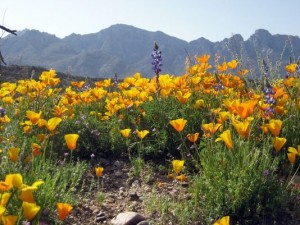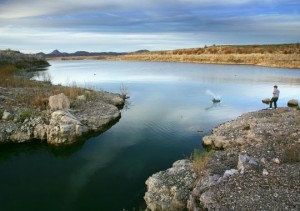 [Source: Arizona Republic Editorial] – The bulldozers were a distant rumble when the push began in 1973 to create Catalina State Park north of Tucson. It took another decade before the land could be acquired and the park dedicated by then-Gov. Bruce Babbitt.
[Source: Arizona Republic Editorial] – The bulldozers were a distant rumble when the push began in 1973 to create Catalina State Park north of Tucson. It took another decade before the land could be acquired and the park dedicated by then-Gov. Bruce Babbitt.
The land was remote then. Its 5,500 acres of foothills, canyons and streams lie between Tucson and Oracle, near the Pusch Ridge Wilderness, where the Coronado National Forest climbs up into the Santa Catalina Mountains.
The park, dotted with 5,000 saguaros, is so rugged that desert bighorn sheep were relocated there. More than 150 species of birds live within its boundaries.
Today, the park is anything but remote. A bustling shopping center sits across from the park entrance. Development tickles the boundaries.
Without the vision of state leaders 40 years ago, this pristine piece of Arizona could be covered with houses and 7-Elevens today.
Today, creating a Catalina State Park would be impossible. Buying the land “would be out of reach,” says Ken Travous, who was executive director of Arizona State Parks for 23 years. “It was almost out of reach then.”
Catalina draws a wide variety of visitors even on a weekday. Campgrounds are full and horses wait in the corrals at the equestrian center.
The value of this lush, open desert in an increasingly urban landscape far exceeds dollars and cents. The wisdom of those who preserved it sings on the wind through the needles of a saguaro: Prescient. Far-sighted.
As Arizona’s population grows and the cost of land increases, places like Catalina become even more important to a state shaped by its wide, open spaces.
The same is true of other state parks that celebrate the state’s natural beauty, as well as those that recall the past, such as the historic courthouse in Tombstone, the Spanish presidio in Tubac, the prehistoric ruins at Homolovi (closed for a year because of budget cuts) and the world-class geological formations in Kartchner Caverns. And don’t forget the bikini country of Lake Havasu or water skiing at Lyman Lake.
These are picture-postcard places where families make memories and rural communities make bank.
Nearly 2.5 million people visit the state parks each year, with half coming from out of state, says State Parks Director Bryan Martyn.
The parks are a playground for urban Arizonans, but they are an economic driver for rural areas.
Martyn says state parks bring more than $300 million to rural economies annually. That’s a powerful economic driver, but years of funding cuts have left those who run the parks unable to keep up with necessary repairs, let alone acquire new parks for future generations.
“Simply put, without a stable, sustainable funding, Arizona’s park system will not be able to survive,” according to a 2009 report from Arizona State University’s Morrison Institute.
When it comes to the consequences of not putting resources into our parks, Travous puts it even more bluntly:
“It will get to the point where they are so hammered you don’t want to go there.”
———-
WHAT YOU CAN DO
Arizona State Parks are a resource for today and a promise for tomorrow. But short-sighted funding decisions imperil their future. You can help change that.
- VISIT. Arizona’s state parks offer dazzling natural wonders, family recreational activities and authentic windows into Arizona’s history and prehistory. azstateparks.com
- BE A CHAMPION. There’s an election coming up. Ask candidates for state office how they plan to support Arizona’s parks and let them know you want this to be a priority issue.
- GET INVOLVED. More than a dozen parks have volunteer “friends” groups that provide fund-raising and other services for their chosen park. For information on joining or starting one: azstateparks.com/volunteer/v_foundation.html
Arizona State Parks Foundation is a non-profit that engages in advocacy, fund-raising and other support:arizonastateparksfoundation.org
The Arizona Heritage Alliance is a non-profit that promotes and protects the Heritage Fund and its goals: azheritage.org
———-
ABOUT THIS SERIES
Arizona State Parks are a valuable resource in great peril. Stripped of funding during the recession, they struggle without state money and stagger under deferred maintenance. Yet they offer open spaces and outdoor recreation for a growing urban population and an economic engine for rural communities. Popular with the public, but lacking political support, funding solutions can help the parks deliver on their remarkable potential.




You must be logged in to post a comment.